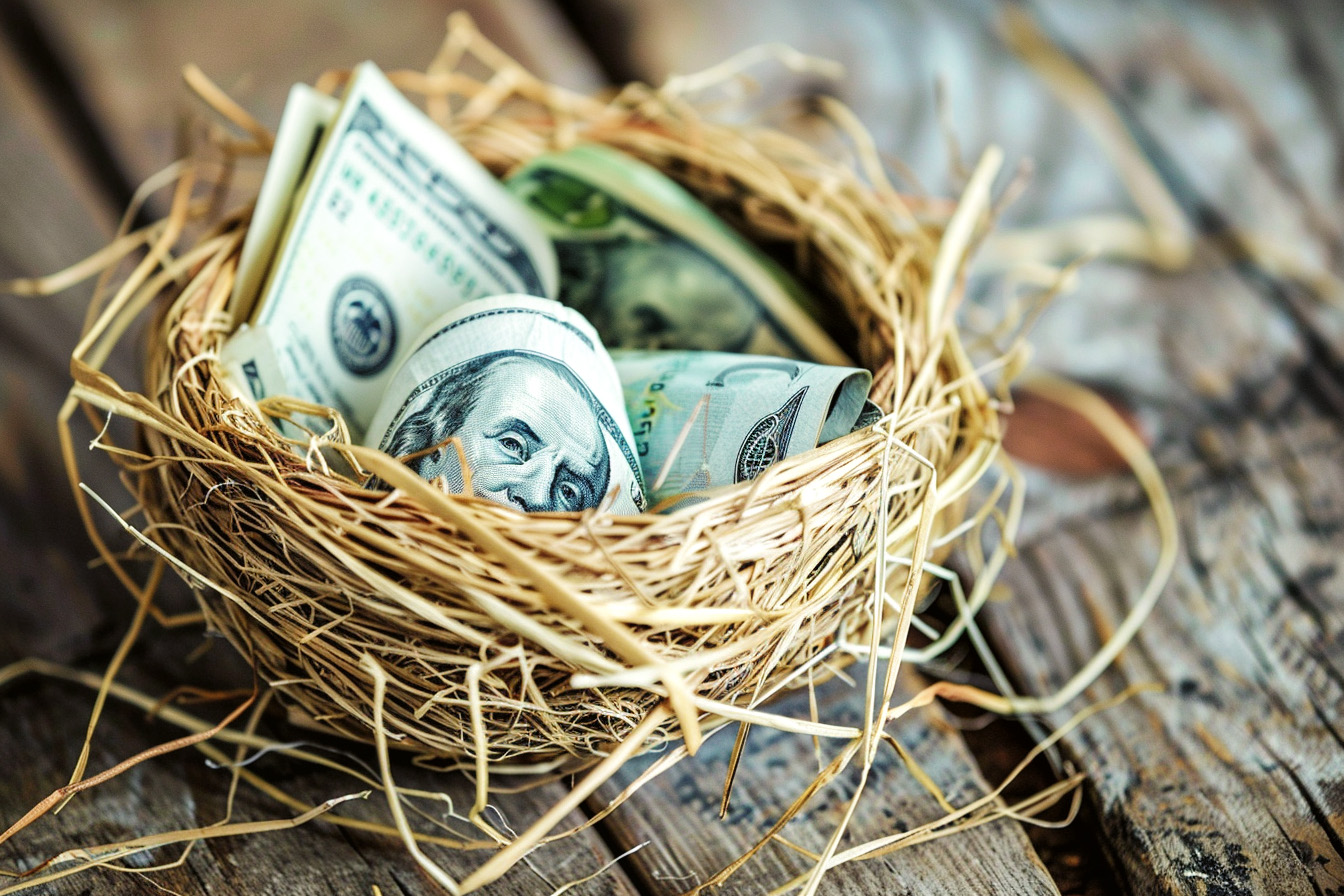Saving 80% of your income is an incredibly ambitious goal that may seem impossibly out of reach. Yet, with focused effort, deliberate planning, and employing strategies that maximize savings while minimizing expenses, achieving an 80% savings rate is possible. This extreme level of saving sets individuals up for immense financial independence and flexibility.
This article outlines the most effective approaches, accounting for all aspects of your financial life, that make saving 80% of your income an attainable target with life-changing potential. Real-world examples and a case study reveal these strategies in action. By assessing your situation, acting on income growth and expense reduction opportunities, and balancing saving with lifestyle, you can progressively build up to this saving rate pinnacle.
Assessing Your Current Financial Standing
Before determining the actions needed to improve your savings ability, you must understand your starting point by calculating your current savings rate. This requires tallying your monthly or annual income, expenditures, and the amount saved over this timeframe. Payment includes all earnings received regularly. Expenses constitute recurring costs like housing, transportation, food, and discretionary purchases. Savings means revenue minus spending. Divide your savings by income to determine your savings rate percentage.
For example, if you earn $5,000 per month, spend $4,000 on living costs, and save $1,000 per month, your savings rate is $1,000 / $5,000 = 20%.
With this baseline savings rate established, you can spot areas needing improvement and set a realistic initial target, like aiming for 40% vs an overwhelming 80% immediately. As your foundational saving strategies yield results, continue ratcheting up your rate.
Building a Solid Savings Foundation
Before employing extreme measures to boost savings, ensure you have established a secure groundwork for responsibly managing your finances. This involves creating an emergency fund, eliminating high-interest debt that erodes savings capacity, setting an executable budget aligned with your goals, and automating aspects of your financial life.
An emergency fund containing 3-6 months’ living expenses can cover unexpected costs without accruing debt. Pay off credit cards, personal loans, and other debts charging over 4-5% interest before making additional savings or investment contributions since these work against your savings rate. Budgeting tools can automatically categorize spending, uncover waste, provide savings suggestions, and keep you accountable. Automate bill payments, savings contributions, and investments for seamless hands-off support.
For instance, having a $15,000 emergency fund means you don’t need to panic and halt retirement contributions if you face a $3,000 car repair. An extra $200 monthly can be directed to savings/investments instead of 20% interest credit card payments. Budget tracking exposes a $100 monthly coffee shop habit to trim. Automating $500 in biweekly investment account transfers frees up time spent manually contributing.
Maximizing Your Income
On the journey to extreme savings, expanding income is the other half of the equation beyond diligent budgeting. Aim for promotional opportunities in your career that come with higher pay, negotiate raises demonstrating your growing value, explore freelance work or launch a side business, minimize taxes by fully utilizing tax-advantaged accounts, and use windfalls wisely.
Seeking a managerial role, certification to boost skills, or new employment can substantially increase earnings. Ask for a 10% raise instead of the standard 3% during reviews by documenting significant contributions. Tutoring, consulting, delivery driving, or selling products represent potential $1,000+ monthly side incomes. Contributing up to $20,500 as an employee to 401ks and $6,000 individually to Roth IRAs can lower tax burdens. Inheritances, work bonuses, and the like should primarily fund savings/investments.
For example, a software developer lands a senior position, taking her salary from $75,000 to $95,000. A delivery driver works weekends and pockets an extra $800 per month. Maximizing 401k contributions saves $2,000 in annual taxes. Together, these allow for saving another $20,000+ yearly.
Cutting Expenses to the Bone
To accelerate savings, vigorously trim unnecessary costs. This involves embracing a minimalist, essentials-only lifestyle, downsizing housing, reducing transportation expenses, decluttering possessions, lowering utility usage, and ditching memberships/subscriptions/luxuries with recurring fees delivering little joy or value. Rent smaller spaces with roommates, use public transit, turn off lights in empty rooms, and swap a $10 monthly streaming plan for free alternatives. Take this lean spending approach seriously and treat expenditures with discomfort instead of nonchalance to spur more mindful purchasing habits long-term.
For example, two roommates splitting a tiny $1,500 per month two-bedroom apartment could save $1,000 each compared to paying for solo $2,500 places and biking over driving where feasible saves $100 monthly and insurance. Canceling Hydroflask and Dollar Shave Club subscriptions saves $264 combined yearly. Small daily coffee shop splurges at $5 per trip and saves $1,300 annually.
Employing Extreme Budgeting Techniques
Specialized budgeting approaches promote conscious spending control and accountability. The envelope system involves allocating planned category amounts in labeled envelopes. Cash is withdrawn accordingly, and no further purchasing in that category can occur when an envelope empties. This tactile method combats overspending.
An alternative is setting a 30-day test where only mandatory living expenses (housing, food, critical transportation) are permitted for a month. Discretionary social events, dining out, entertainment, shopping excursions, and the like are prohibited. Not only does this reduce costs by hundreds for a month, but it also frequently builds lasting positive spending habits.
Committing to not purchasing wants or needs for set periods pushes resourcefulness, too. Necessity-only two-week, monthlong, or 90-day no-spend challenges train budgeting muscles. As does resolving to DIY wherever imaginable – why hire a cleaning service, landscaper, or handyperson when YouTubetutorials and personal effort get it done? Added benefits are learning valuable skills and better appreciating the value of money.
Investing for the Long Term
As savings accumulate, investing enables money to work harder than idly sitting in accounts. Investment returns outpace inflation over long periods through compounding if appropriately diversified and risk is managed. Maximize tax-advantaged retirement accounts, like IRAs and 401ks, and then utilize standard investment accounts. Seek mostly low-fee, broad-market index funds over costly, actively managed funds or speculation in single stocks. Automate investing for unmatched hands-off convenience, too.
For instance, consistently investing $500 monthly into an S&P 500 index fund yielding just 6% annually totals over $850,000 in 30 years, given compound growth without needing stellar stock-picking luck. Even higher returns are possible with small business ownership or real estate. Preferably make investing an automated routine rather than emotional decisions each month.
Staying Motivated
Pursuing an extreme 80% savings rate over months and years requires fierce, sustained motivation and dedication that most lack. Maintain perspective by calculating progress occasionally – visualize net worth or retirement savings graphs trending positively. Celebrate small milestones like cutting recurring costs by $100 that first month. Share both goals and successes with others to feel accountable. Post financial targets somewhere visible as a frequent reminder while working, studying, or in your home.
Overcoming Challenges
Inevitably, unexpected obstacles arise, threatening savings rate goals. Automobile repairs, medical bills, family needs, job loss periods, portfolio declines, and more can disrupt progress despite best efforts. But with an emergency fund and flexible mindset, temporary setbacks need not tank the overall journey. Cover essential costs as required, then reinforce saving practices once the storm passes rather than permanently abandoning them after each minor financial blow. Adjust goals if necessary, but keep an eye on the horizon.
Balancing Extreme Saving with Quality of Life
Maniacally cutting costs and stockpiling cash indeed enable faster financial freedom. But taking it too far can breed resentment, myopia, and decreased well-being. Schedule non-negotiable free weekends, monthly entertainment budget, and vacation fund so saving does not consume life entirely. Practice mindfulness, maintain social connections, and eat well to support mental health. Embrace slower progress by keeping slightly less if frustration arises. The path to any extreme goal deserves ample fuel stops.
Casey’s Story: Achieving an 80% Savings Rate in 5 Years
27-year-old Casey graduated college with $15,000 in student loan debt and very little savings as he began his consulting career. The starting salary was $60,000 with a $500 monthly student loan payment and $1,000 allocated towards rent and usual living expenses. This allowed $750 in monthly savings, or only 15% of his income. But Casey dreamed of financial independence by age 40.
First, he created a 3-month emergency fund, paid off his student loan, and optimized his 401k contributions for his company’s total matching amount. A budget app uncovered $250 previously squandered monthly on convenience food and drinks. He moved into a shared apartment to trim housing costs, purchased a transit pass, and committed to biking whenever possible to forego car ownership. These foundation-building tactics supported boosting savings from 15% to 35% of income by age 28.
After being promoted, Casey started tutoring students for $20 hourly on the side, earning an extra $1,000 each month. He continued living exceptionally frugally, splitting costs in a shared house with roommates at age 30. Casey automated near-max investments to his Roth IRA. When unexpected medical bills struck, his emergency fund prevented resorting to debt. Through relentlessly cutting controllable costs wherever possible and expanding income unexpectedly when prudent chances appeared, Casey achieved an 80% savings rate by age 32.
Now aged 33, Casey works part-time at his firm for supplemental income and health insurance. But his nest egg accumulated from extreme savings over the past decade supports pursuing freelancing full-time in his passion for the education consulting industry, offering ample freedom and flexibility with yearly withdrawals of just $25,000. Though challenging, the focused journey to maximize savings meaningfully paid off. Financial independence with decades of life still ahead feels incredible.
Key Takeaways
- Assess current savings vs income to establish a baseline savings rate, then incrementally increase towards 80%
- Build emergency funds, pay off expensive debt, budget diligently, and automate finances.
- Boost income by progressing career-wise, freelancing, minimizing taxes
- Minimize housing, transportation, subscription, and lifestyle costs
- Employ envelope budgeting systems and short-term spending challenges
- Let compound investing returns do heavy lifting long-run
- Celebrate small milestones, get accountable partners, and visualize goals
- Accept some setbacks WILL happen; stay flexible and adjust as required
- Balance ambition with personal well-being
- Significant lifestyle and freedom payoffs DO await those who stick to an extreme savings path.
Conclusion
Pursuing an 80% savings rate is an undeniably intimidating challenge requiring years of focused financial effort significantly beyond societal norms. Yet, this lofty goal rests squarely within reach, as illustrated above via targeted strategies across life areas and Casey’s real-world example. With diligence and resilience, reinforced by tracking measurable progress over time, incredible lifestyle possibilities emerge.
Extreme saving demands sacrifice and restraint that financial status quo mindsets may resist. But by living deliberately, spending ruthlessly little on non-essentials, and investing excess earnings rather than squandering them, the path to life-changing savings rates substitutes truly hopeful, liberated realities for the drudgery awaiting most income-producers headed towards traditional retirements.












Leave a Reply